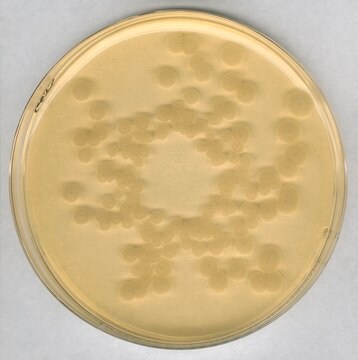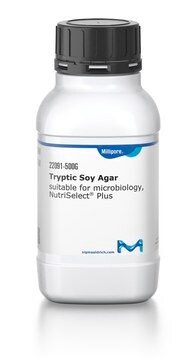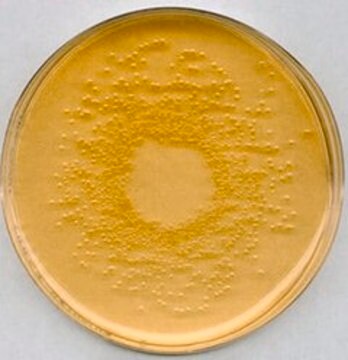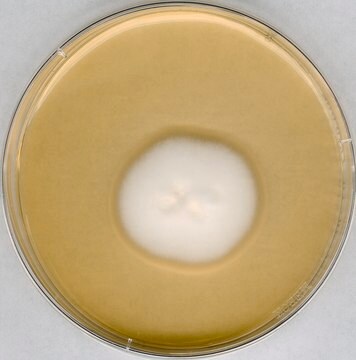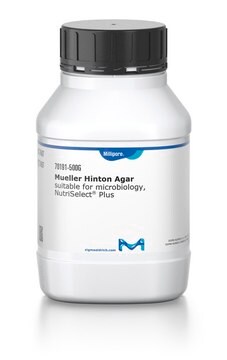22091
Tryptic Soy Agar - Dehydrated Culture Media
NutriSelect® Plus, powder, suitable for microbiology
Synonym(s):
CASO Agar, Soybean Casein digest Agar, TSA, Tryptone Soy Agar, CASO Agar, Soybean Casein digest Agar, TSA, Tryptone Soya Agar
About This Item
Recommended Products
Agency
according to GB 4789.40-2016
according to ISO 11731:2017
according to ISO 22964:2017
Quality Level
sterility
non-sterile
product line
BioChemika
form
powder
shelf life
limited shelf life, expiry date on the label
composition
agar, 15 g/L
casein peptone (pancreatic), 15 g/L
sodium chloride, 5 g/L
soya peptone (papainic), 5 g/L
packaging
bottle of 2.5 kg
bottle of 500 g
manufacturer/tradename
NutriSelect® Plus
technique(s)
microbe id | specific enzyme detection: suitable
microbiological culture: suitable
color
light yellow
final pH
7.3±0.2 (25 °C)
application(s)
agriculture
bioburden testing
cleaning products
clinical testing
cosmetics
environmental
food and beverages
personal care
surface monitoring
veterinary
microbiology
suitability
Enterococcus spp.
Haemophilus spp.
Pneumococcus spp.
nonselective for Bacillus spp.
nonselective for Bacteroides spp.
nonselective for Campylobacter spp.
nonselective for Candida spp.
nonselective for Cronobacter spp.
nonselective for Escherichia coli
nonselective for Neisseria spp.
nonselective for Staphylococcus spp.
nonselective for Streptococcus spp.
nonselective for bacteria (General Media)
nonselective for coliforms
Looking for similar products? Visit Product Comparison Guide
General description
Application
Features and Benefits
- Quality control with growth promotion test according to industry standards
- Quality assurance acc. to ISO 9001
- Cost-efficient powdered media
Preparation Note
Legal Information
Disclaimer
Storage Class Code
11 - Combustible Solids
WGK
WGK 3
Flash Point(F)
Not applicable
Flash Point(C)
Not applicable
Personal Protective Equipment
Choose from one of the most recent versions:
Already Own This Product?
Find documentation for the products that you have recently purchased in the Document Library.
Customers Also Viewed
Articles
Vibrios are motile, curved or comma-shaped bacilli and have a single polar flagella with sheet proteins. They are often found in open water, freshwater and saltwater.
On the Trail of Campylobacter - The Campylobacter is one of the leading causes of human gastroenteritis. Common Campylobacter species C. jejuni, C. coli, and C. lari are responsible for most cases of campylobacteriosis. However, other species, like C. fetus, which causes spontaneous abortions, have also been associated with human illness. Campylobacter are Gram-negative, spiral-shaped, microaerophilic and motile bacteria with uni- or bi-polar fl agella
Campylobacter spp. are regarded as the leading cause of bacterial gastroenteritis in humans worldwide.
Streptococci- Overview of Detection, Identification, Differentiation and Cultivation Techniques
Our team of scientists has experience in all areas of research including Life Science, Material Science, Chemical Synthesis, Chromatography, Analytical and many others.
Contact Technical Service
